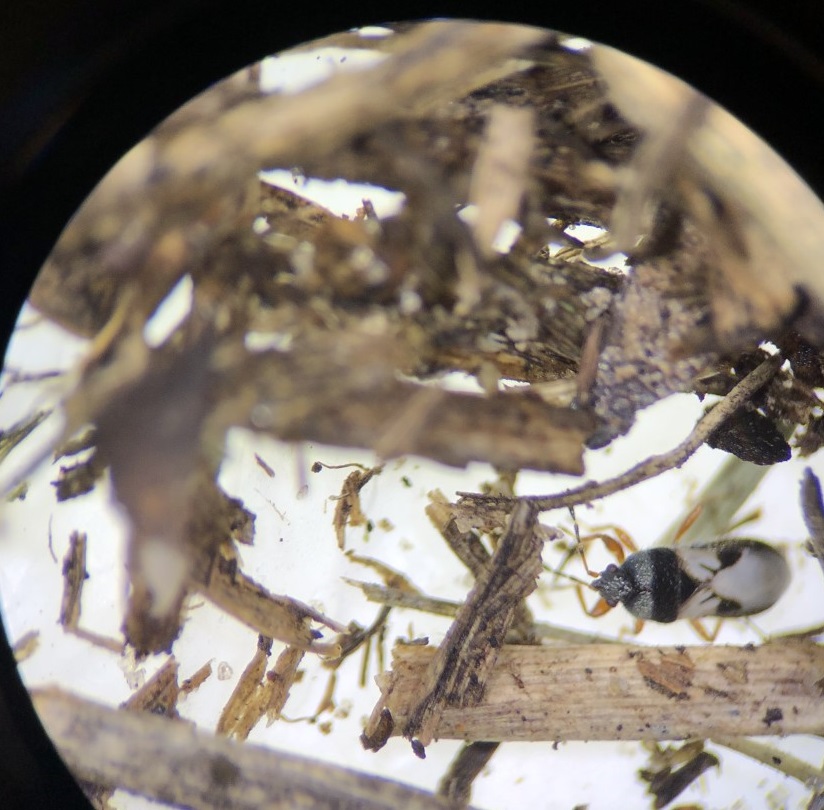
Chinch bugs have long been a major pest in St. Augustine lawns, but did you know they can also cause damage in other lawn grasses as well? Recently on a site visit, I came across a zoysia lawn with brown patches and when it was disturbed, multiple insects emerged from the thatch layer of dead grass. Not immediately suspecting chinch bugs since this was in zoysia, I took some of the adults back to the plant clinic and observed them under a microscope. Lo and behold, chinch bugs!
St. Augustine grass is the most common turf grass used in Florida, but zoysia is quickly gaining in popularity, in part because of its desirable, dense, carpet-like growth and resistance to chinch bugs. Although chinch bugs were discovered damaging this particular yard, St. Augustine grass is their preferred food. Perhaps it was due to a lack of St. Augustine in that neighborhood that chinch bugs were discovered in zoysia, or that the grass was stressed and had a thick layer of thatch that provides food and shelter for these lawn pests. It is imperative, regardless of your type of lawn, to utilize best management practices since the best defense against disease and pests is a healthy, diverse landscape.
Consider reducing how much turf you have and replacing some of it with landscape beds full of a diversity of native or Florida-friendly plants to attract beneficial insects. Avoid over watering your lawn, never watering more than 2 times a week but preferably less on an as-needed basis. If we receive 1/2 inch or more of rain, skip a day of watering for that week. Also, to reduce the likelihood of chinch bugs in your zoysia or St. Augustine grass, it’s recommended that you have it dethatched about once every 2 years or when the layer of thatch gets to be 1/2 inch thick. This won’t be necessary for new lawns, but as it ages, both both zoysia and St. Augustine are prone to thatch build-up, particularly if they’re over fertilized. If you do fertilize, fertilize with a slow-release granular fertilizer 2 to 3 times a year between April 15 and October 1. A soil test can reveal if your soil is deficient in nutrients which will make your turf more susceptible to pests and disease, particularly in soils with high pH. And always, always, always, scout your yard regularly for signs of stress or damage, identify the pest if there is one, and only spot-spray pesticides labeled for that pest when needed. The overuse of broad spectrum pesticides has greatly contributed to many of the major pest problems we now have in the landscape, particularly chinch bugs that have developed chemical resistance. For more information on chinch bugs, visit: https://edis.ifas.ufl.edu/lh036
If you have any questions about your lawn and landscape, contact your UF/IFAS Marion County Extension Service at 352-671-8400 or email mandab@ufl.edu
 1
1
